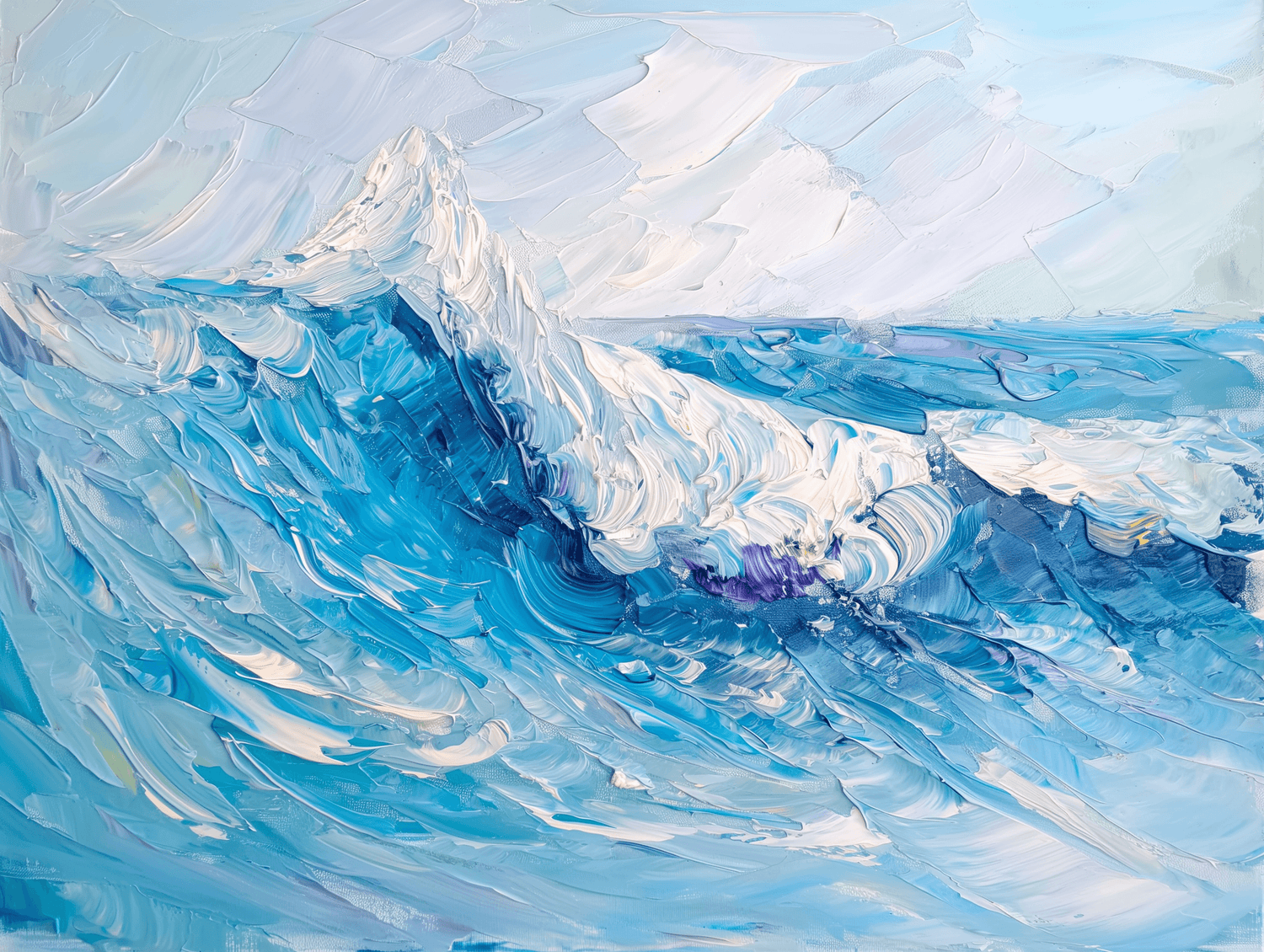Art has the power to transform an environment, and when it comes to embossed art reproductions like those of Materico , this power is amplified. 3D works , thanks to their depth and texture, can truly be the fulcrum of an environment.
But there is one crucial aspect that can make the difference between a work that goes unnoticed and one that immediately captures attention: lighting. The strategic use of light is essential to enhance the three-dimensional details of paintings, accentuating their relief and creating surprising visual effects.
In this article, we’ll explore how to choose and arrange the right lighting to enhance your 3D art reproductions , making each piece a unique visual experience.
1. Why is lighting essential for 3D artworks?
Light is not only a practical tool, but also an artistic element in itself. 3D art reproductions are designed to capture light in ways that traditional works cannot. The relief of brush strokes and the depth of each painting require careful lighting to be fully appreciated.
If the lighting is inadequate, raised details may go unnoticed, and the three-dimensional effect may not stand out as it should.
The right lighting, on the other hand, enhances the contours , nuances and layers of the painting, bringing out every single detail of the painting.
Furthermore, light can create shadow plays that amplify the 3D effect, bringing the work to life and adding a further visual dimension to the environment.
2. Choose the right type of lighting
There are different types of lighting that you can use to enhance 3D paintings in your home. Each type of light has specific characteristics that can enhance different aspects of the work.
Here are some of the most common options:
a) Direct light (Spotlight)

Direct light is one of the most effective options for highlighting the details of 3D art reproductions . A spotlight or adjustable wall lamp can be positioned so that the light hits the surface of the painting directly. Concentrated light highlights the nuances and relief , creating shadows that enhance the three-dimensionality of the work.
- Positioning : The lamp should be placed at approximately 30-45 degrees from the painting, so as not to create annoying reflections, but rather to play with the shadows and the relief of the brush strokes.
- Light temperature : For optimal results, a warm light (2700K-3000K) is often the most suitable. This type of light creates a welcoming atmosphere and enhances the warm tones of the work.
b) Indirect light (Soft light)

Indirect lighting is ideal for those who want a softer, but no less effective, atmosphere. A ceiling lamp or LED strip installed above the painting or along the wall can spread a uniform and delicate light on the work.
- Advantages : Indirect light does not create too strong contrasts, but still enhances the details of the works in relief without overemphasizing the shadows.
- Positioning : The light should be directed so that it does not hit the work directly, but illuminates it through the ceiling or walls. This type of light is perfect for those looking for an elegant and discreet environment.
c) LED lighting

LED strips are a modern and versatile option. They can be installed above, below or on the sides of a painting to create special effects. Dimmable LED strips allow you to adjust the intensity of the light, adapting it to the surrounding environment or the time of day.
-
Advantages : LED lights are energy efficient and can be positioned discreetly, without interfering with the overall aesthetics of the painting. They can also be used to create lighting effects that bring out specific details of 3D works, such as contours or color gradients.
3. The position of the painting in relation to the light
The position of the painting in relation to the light source is crucial to achieving the desired effect. Here are some guidelines:
- Lighting Angle : A lighting angle between 30 and 45 degrees is ideal. This angle allows you to get the most relief and depth of the work, creating subtle shadows that accentuate the three-dimensionality.
- Avoid reflections : If the painting is protected by a display case or anti-reflective glass , position the light so as to avoid reflections on the glass surface. Alternatively, you can opt for direct light lamps that are not too intense, but strong enough to illuminate the painting without compromising the visual quality.
- Natural light : If possible, use natural light from a window to illuminate your painting during the day. Natural light adds a touch of freshness and liveliness, but be careful not to expose your work to direct sunlight for too long, as this could damage the colors.
4. Combine lighting and furniture
In addition to choosing the right lighting for your 3D paintings , it is important to consider how the light will interact with the surrounding decor. Materico offers art reproductions that can be easily integrated into modern, minimalist or more traditional environments. The light should work in harmony with the decor, enhancing the atmosphere without distracting from the beauty of the work itself.
- Modern decor : If the environment is contemporary, a clear and sharp light will accentuate the minimalist look and the clean design of the relief works. LED lamps and recessed spotlights are perfect for enhancing the three-dimensional effect without altering the aesthetics of the living room.
- Classic decor : If your environment is more classic, a warm and diffused light will help create a welcoming atmosphere, while a retro-style wall lamp or a vintage table lamp will add a touch of elegance.
5. Technology and innovation in light for art
In addition to traditional lighting methods, technology now offers advanced solutions to enhance art. Smart lights , controllable via app or remote control, allow you to adjust the intensity and temperature of the light depending on the time of day. Some lighting systems can also change color, creating unique effects that adapt to the mood or event in progress.
Conclusion
Lighting is an essential element to enhance Materico 's 3D artistic reproductions and to bring out every single three-dimensional detail of the work. With the strategic use of direct and indirect light and LED strips , you can create surprising visual effects that will bring your art to life.
Don't forget that the right lighting can transform a space, highlighting the beauty of your artwork and creating a unique atmosphere in your home.








